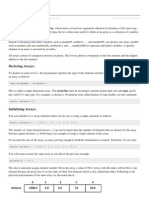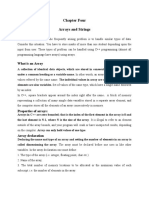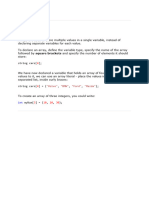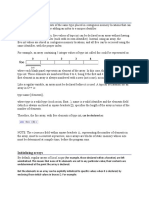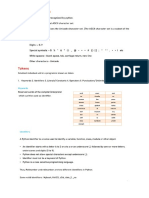0% found this document useful (0 votes)
45 views31 pagesArray
Arrays are data structures that store multiple values of the same data type in contiguous memory locations, simplifying the management of large datasets. In C++, arrays can be declared with a specified size and can be accessed or modified using indices starting from 0. They can be initialized in various ways, including at declaration or using loops, and can be one-dimensional or multi-dimensional.
Uploaded by
norainibrahim190Copyright
© © All Rights Reserved
We take content rights seriously. If you suspect this is your content, claim it here.
Available Formats
Download as PPTX, PDF, TXT or read online on Scribd
0% found this document useful (0 votes)
45 views31 pagesArray
Arrays are data structures that store multiple values of the same data type in contiguous memory locations, simplifying the management of large datasets. In C++, arrays can be declared with a specified size and can be accessed or modified using indices starting from 0. They can be initialized in various ways, including at declaration or using loops, and can be one-dimensional or multi-dimensional.
Uploaded by
norainibrahim190Copyright
© © All Rights Reserved
We take content rights seriously. If you suspect this is your content, claim it here.
Available Formats
Download as PPTX, PDF, TXT or read online on Scribd
/ 31
























